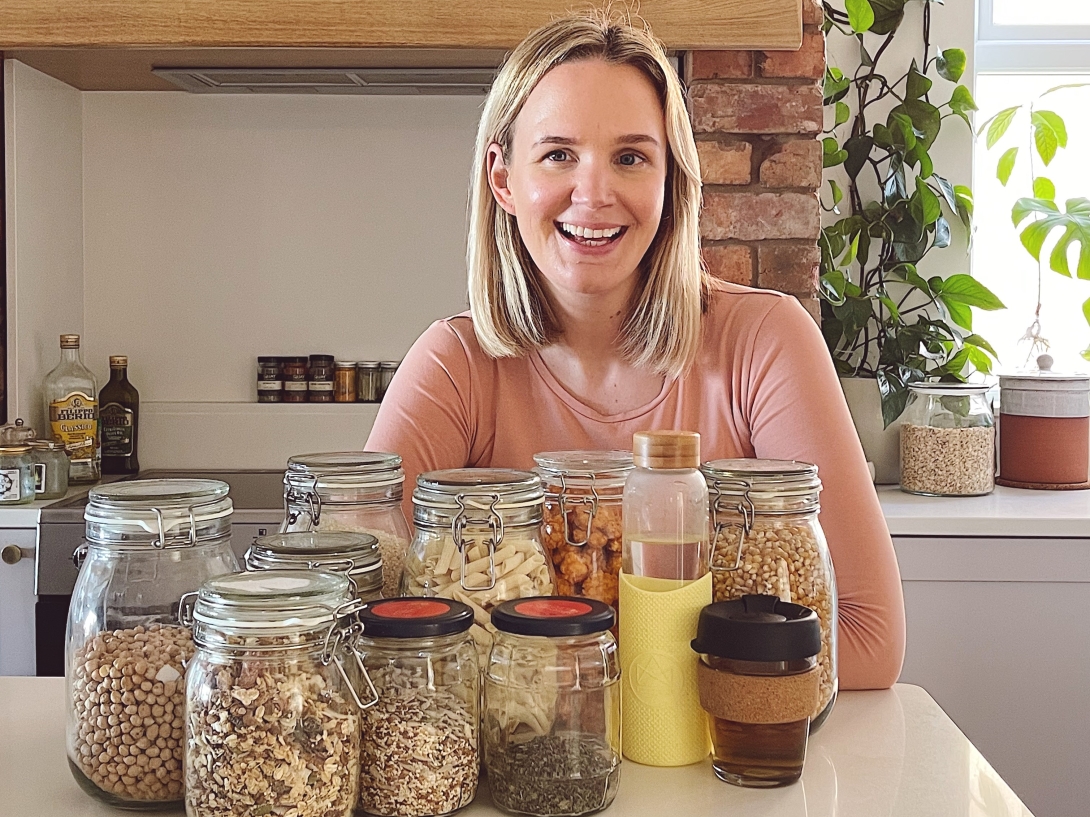
Microplastics are small particles of plastic that are less than 5mm wide, and some are so tiny that you can’t even see them with your naked eye.
Levels of microplastics, and the chemicals they leach once they have broken down, have been found to be increasing in the human body over recent years, as the number of particulates recorded in our water supplies have risen.
It is no surprise to hear then, that microplastics are also found in large quantities in our homes. So, what can we do about it? Luckily, there are still many things that you can do to reduce your family’s exposure to microplastics, and in turn reduce your plastic usage. I will be going into more detail about my top five tips for this.
Clean and dust your home regularly
Did you know that there are microplastics in dust? A study conducted by the World Economic Forum asked residents of 32 homes across Sydney, Australia, to capture dust particles from their homes, and when researchers analysed the dust particles, they found that 39% of them were microplastics. Weekly dusting, cleaning and vacuuming is important to remove microplastics from your home.
Although it’s a less easily achievable tip, if you are thinking of decorating, opt for hardwood floors or natural rugs and carpets over synthetic carpets. Synthetic materials can shed tiny microplastic fibres and if they aren’t caught with a vacuum, they may become airborne or make their way into products we consume.
Air dry your clothes
In a single household a tumble dryer can release up to 120 million microfibres into the air every year. A very simple way to avoid this is to ditch the dryer and air dry your clothes as much as possible to prevent them shedding microfibres.
As clothing and textiles are the source of around 35% of microplastics, rethinking your consumption choices can also go a long way. This could be opting for clothes made out of natural materials, buying pre-loved items, and cutting down on purchasing new items where possible.
Use glass containers in the microwave
Though it’s a convenient way to reheat your food, putting plastic containers in the microwave can cause the leaching of chemicals into your food. This is a recent discovery for me, and it holds true even when plastic containers are labelled “microwave safe.” Being microwave safe means the container won’t melt in the microwave, not that it won’t transfer chemicals to your food. Glass containers, on the other hand, are a completely risk-free way to reheat your food. Glass is a natural material that doesn’t contain chemicals and doesn’t interact with other items (meaning it can’t alter the taste of your food either!).
Storing food in glass rather than plastic within your home is also a great change to make. This could be as simple as storing your food in upcycled jars! Glass doesn’t bio-degrade, so you can use it again and again.
Avoid single use coffee cups
Single use coffee cups are so popular for consuming beverages, but these paper cups have an interior that is lined with a plastic layer. A study on how this material reacts to hot water found that 25,000 micron-sized microplastic particles were released into one cup of hot water in 15 minutes. This means that grabbing a takeaway hot drink usually means we are also consuming microplastics. So, what can we do about it? Buy a reusable drinking container and get it filled up by your favourite barista! There are lots of toughened glass tea and coffee cups available on the market and they make great little drinking vessels. I actually love to make my herbal tea before I walk out the door, which saves me money too!
Swap out plastic for glass – it’s a no brainer!
Swapping plastic to glass as much as you will make a big difference in the amount of microplastics you find in your home, and in your food and drink! Choosing products packaged in glass when you’re doing your shopping and ditching plastic containers in favour of glass ones are relatively easy choices to make that have a significant impact.
If this got you thinking about the many benefits of choosing and using glass, then I encourage you to take a look at the many useful articles by British Glass sharing why it’s such a good choice for you and your family!
Kate x
@my_plastic_free_home
This guest blog has been written by Kate from @my_plastic_free_home as part of our ongoing Microplastic Workout campaign.


